
David Holman
-
Posts
4,153 -
Joined
-
Last visited
-
Days Won
114
Content Type
Profiles
Forums
Resource Library
Events
Gallery
Blogs
Store
Community Map
Posts posted by David Holman
-
-
Splendid to see my old coach recycled in such a great way, Dave and rather sobering to think that I originally built it over 25 years ago, yet still available today! Those pics on RMweb will be more than useful when I start the next one. Hopefully will make a better job of it this time too. Rumour has it they are selling as well as ever, no doubt due to new Ragstone kit.
For those of you who have not come across Charmouth or Bridport, then pay careful attention. This is 7mm NG at its very best!
-
Well done Harry, good to see someone challenging themselves.
Re those laminated rods, from the pics, looks like you held them in the vice to solder. A better way is to use a couple of small panel pins/tacks, through the crank pin holes into a piece of wood or board. Tin the layers first, flux an then apply the iron.
Take your time and get the chassis rolling smoothly and the rest is cosmetic.
-
Would I be right in thinking these vans are therefore on the wonderful Charmouth, or is this another DT?
Either way, good to know the coach has found new lives. One of the many joys of 7mmNG is the fun in adapting things.
Planning for a proper Clogher Valley layout is well under way and hope to start building this summer.
Heard a couple of years ago that the standard gauge follow up to High Weald, a roadside tramway called Loose End (also Kent based) found its way to France and the same barn where Ditchling Green resides. Whether they are still there, I have no idea, but it was nice to think the layout was in such good company!
-
Arigna Town and Valencia Harbour willing be flying the flag for 5'3 gauge in two weeks time at Allypally. If visiting, do come and say hello!
-
I have been using Halfords spray cans for years without any issues whatsoever. Indeed, for whatever reason, find the nozzle on their cans to be superior to other makers such as Humbrol, Precision etc.
However, I only use their standard grey or orange primers, NOT the self etch ones. Grey is ideal for non fitted wagons and orange for fitted (ie bauxite).
I use the same methods as the others. Can at room temp, or on a towel on a radiator to warm up a bit and shake well of course.
Often do my basic spraying outdoors, even in winter - though not when it is raining! Have various bits of thick wire bent into hooks and hang a model from one in one hand and spray can in the other. Yes, even kit built locos.
Heresy I know, but works for me and of course there is extensive titivating done in the workshop after the paint has dried for 24 hours.
-
I agree Mick. Saw their stand at St Albans and booked them for Chatham this year. The range of etches they produce, right down to exquisite sets of workshop tools, cry out for a model to be built around them.
-
A gem of a picture JB. You didn't get the right hand side of the cab by any chance...???
-
Thanks Eoin, will see what I can find
-
Precision paints do a decent sleeper grime enamel pot, though as with all such things, it is really important to try and model a specific location, because not all track is the same colour. Areas where locos stand will have oily deposits [try Humbrol Metalcoate Gunmetal and Precision Tarmac], while the entry to a station platform is likely to have lots of brake dust deposits [like rust, so try weathering powders to simulate. Likewise ballast, it is rarely uniform and even when well maintained is unlikely to be look representative if only a single colour is used. Study the prototype and do not be afraid to mix colours to get the effect you want. Also, check the size of the granules too. On the modern scene, ballads is formed of quite large pieces, but for earlier times I find going down a scale works well - so try 2mm ballast for 4mm scale & 4mm scale for 7mm etc. In N gauge, sand can be better. Woodlands stuff looks best to my eye, though tis all in the beholder I guess.
-
At the St Albans show in January, there was a chap showing progress on his Lartigue layout. Unlike the French layout [which just goes round in a scenic circle], this will be part of one of the terminus stations, complete with turntable points and so one. A frames for the track were very nicely etched and the whole thing looked very promising. He brought a L&B wagon to compare with my Sligo ones & it was surprising how big the former were. No loco to show yet, but it is a bold project that deserves to do well.
-
Saturn V rocket out of nuclear submarine school of design, methinks...
-
Splendid. Early diesels seem to have much more character, especially as models, though doesn't excuse what they got rid of!
-
Have certainly been tempted by the idea of a C for a possible 'dieselised' presentation of Arigna Town. Silver or green maybe, with perhaps a G and a 121 for company. An info on how the loco was built - drawing, chassis, etc would be welcome.
-
Very tasty indeed - the 4-4-0s that is. That Turfburner was an ugly so and so!
-
Decided the other day, that I'd make a formal start on my new project by doing something nice and simple, like an open wagon. The subject is the Clogher Valley Railway and Branchlines do a nice wagon chassis of the prototype, while in E M Patterson's book there is a very fine picture of a CVR 5 ton open wagon from 1937.
The reason for doing an open, is that [at first sight], it is a simple open box. Three planks to scribe and just five pieces of plastikard to cut out and weld together. Well, how wrong can you be!
The photo in Patterson's book [probably 4x larger than the actual model would be] showed a wealth of detail. Numerous large bolts hold the iron corner plates to the wooden sides and these looked too big to represent by using my GW Models riveting tool. So, 56 cubes cut from 20thou square strip used instead and put in individually. Then there was the iron strips fixed to the top edge of each side. Common on all open wagons, but rarely modelled it seems & probably little point in 4mm scale. However, in 7mm, I reckoned they were worth adding, especially as they are held down with 14 iron clips. Three pieces for each of these, so another 42 parts to cut, this time from 20x15 strip. Strapping, hinges and catches added umpteen more pieces of microstrip & then there are 8 cleats on sides and ends to wind the rope used to hold down tarpaulins when used. One bit of plastikard and two bits of bent 0.5mm wire for each of these.
In all estimate there are close to 200 separate pieces in this one wagon body! Am thinking how I might do a master for sides and ends so I can resin cast future versions. However, none of it was over complicated - just a bit tedious at times, so might still build each one separately. One option will be to drill the strapping and use 1mm wire for the bolts, so these can then be seen on the inside of an empty wagon [or two]. Thankfully, this project is not going to require masses of rolling stock - probably a dozen or so wagons, a couple of coaches, two locos, the railcar & the tractor/unit. Hence tempting to try and do it to the highest possible [for me] standard with a much detail as I can find. Not sure if the lettering I've done [by hand with a white gel pen], is good enough, so may have to invest in some custom transfers. That's the plan anyway, with regular reminders to myself that it is not a race!
-
Have tried all sorts over the years, Harry, but these days stick mainly to wire scrapers. 0.5mm nickel silver or phosphor bronze, depending on what is available.
Where possible, use small pieces of copper clad strip [4 or 7mm scale sleeper strip], stuck to the frames with 5 min epoxy, then solder the pick up wires to that. If I can, I arrange the wire pick ups to bear on the back of the wheels - either horizontally or vertically. On both the Sligo small tanks, the pick ups drop down vertically behind the driving wheels. On the J26, there is space to hide the pickups horizontally, so they bear on the back of the top of rear face or the tread of the wheels. Hopefully the photos show this.
Overall, have found this method better than plunger pickups. Though these are neat and tidy, I find the springs can be too strong and end up acting as a brake. Goes without saying that the more pick ups the better and cleanliness comes well before godliness - track, wheels and pickups, to enable best quality running.
-
Thanks for the help chaps. Being in 7mm scale for the last 20 years, it is easy to miss what is available elsewhere. The Branchlines chassis are compensated, so only need pin point axles at one end, while the coaches have inside bearings. Am thinking the railcar and unit (Clogher Valley) can be done in the same way as my Sligo Railcar B. The 0-4-2T instructions suggest Slaters wheels, so a small stock of 2mm rod seems the likely answer.
-
On a slightly different track, I am starting a new 3' narrow gauge project which will be 21mm gauge in 7mm scale. Branchlines do a nice wagon chassis, but am a little concerned with the idea of 26mm pin point axles as this leaves little meat on the ends for 21mm gauge. Where do you get 28mm axles from please?
-
Another idea is to put in small flat headed screws in line with the rails. Each side of the baseboard joint and solder the rails to these. After, you can cut bits of sleeper to hide the screws. Have used this on numerous exhibition layouts without any problems.
-
Have been hinting for a while that I am keen to get into a new 7mm scale narrow gauge project. The theme is Clogher Valley, which I would hope you folk over the water are well versed with. That said, the line closed in 1942, so anyone with first hand experience of it will be well into their 70s by now...
Why CVR? Well, there are a few photos around, albeit black and white, plus [like the SLNCR], there is a good book on the subject [EM Patterson], while kits are available for a fair amount of the locos and rolling stock. So, the maroon coloured box contains a range of goodies that will hopefully keep me occupied over the next few months. Hence, we have a Ragstone Models kit of a Sharp Stewart 0-4-2T, a Branchlines kit of one of the third class coaches [they do one of the first class coach too, plus a wagon chassis], while my old friend Alphagraphix does card kits of both Railcar 1 and its tractor unit cousin, which will form the starting points for scratch built models of these in due course.
They will all be done to the correct 21mm gauge [of course!] & I have in mind a small working diorama to begin with, which will cover a wayside station [with a couple of short sidings, plus a hint of roadside tramway and street scene at either end. Hopefully, it will be operable as a through line for exhibition purposes. That will be some time ahead of course, so don't hold your breath!
Pictures show the various bits I've assembled thus far.
-
Good for you, am sure you will get much more satisfaction from making something yourself than just opening a box - even though many boxes have very nice contents these days! Will look forward to seeing the model progress
-
The basic rule for good visual effect is that a train needs to have a run of three times its own length to look sensible. So, if a 10' straight is what you have, then max train length should be 30". Platform widths were a minimum of 6' in the real world, with 12' preferable.
-
Cheers Harry, do come and say hello. There are many people on your side of the water I am very much looking forward to meeting.
-
Yes it does! What is more, I learned how to do them from the master of scenics, Mr G himself. Gordon has been a valued friend for many years and his books on scenics and modelling are well worth getting hold of.
Many thanks for your kind thoughts, but if you see Pempoul, you will know it really is at another level.
.png.c363cdf5c3fb7955cd92a55eb6dbbae0.png)

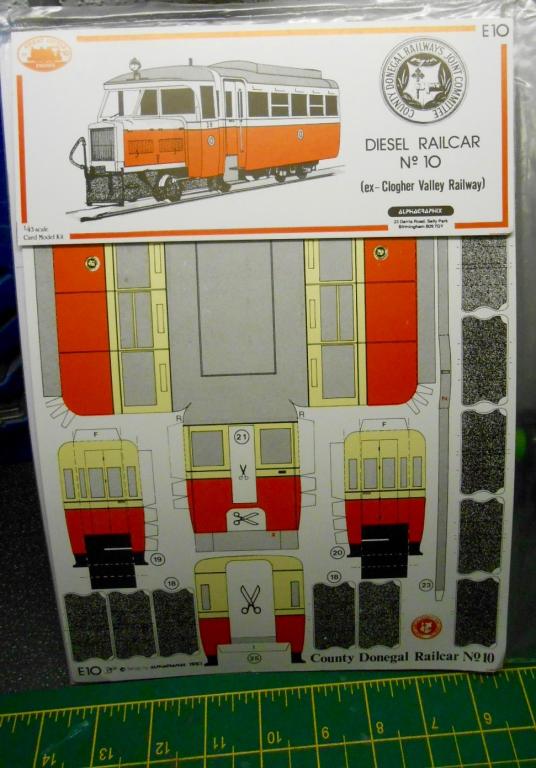
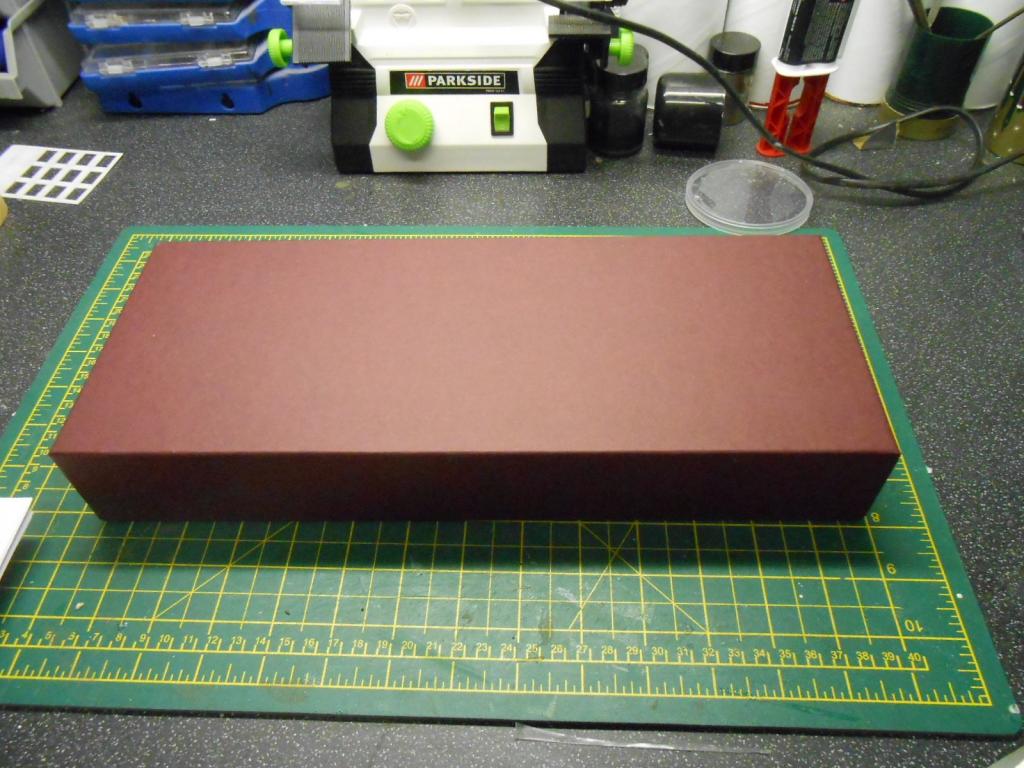
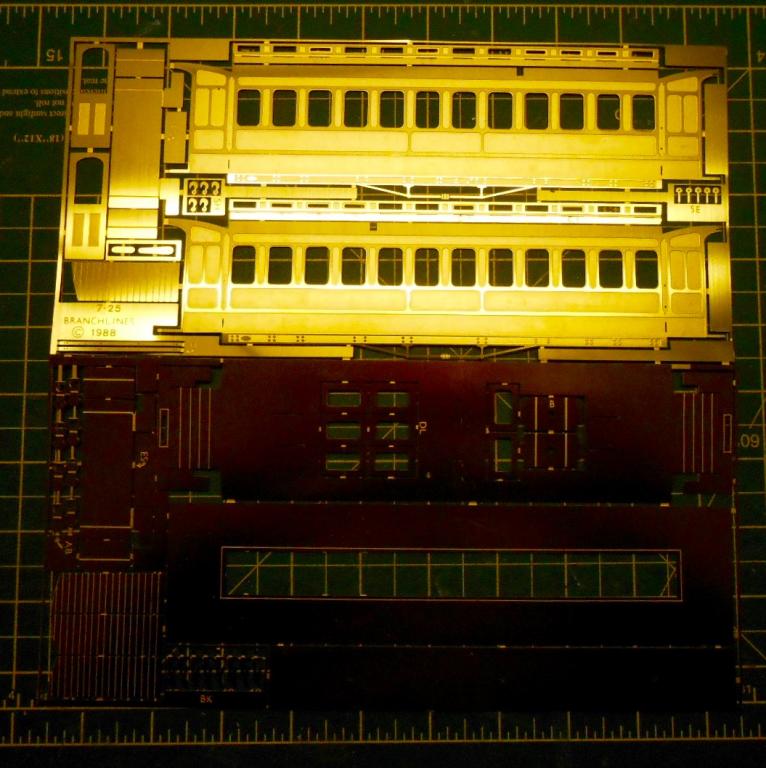
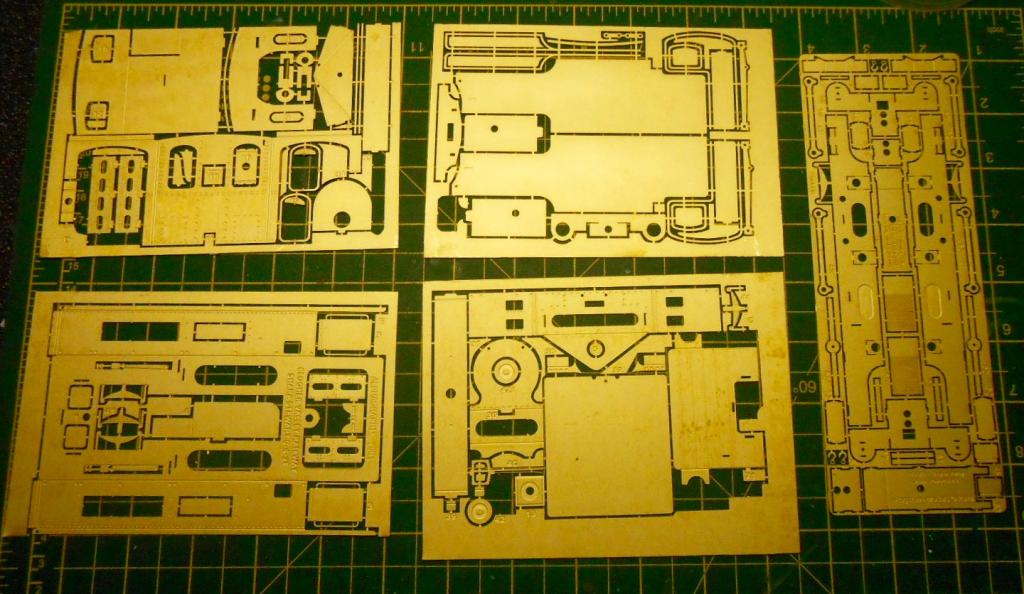
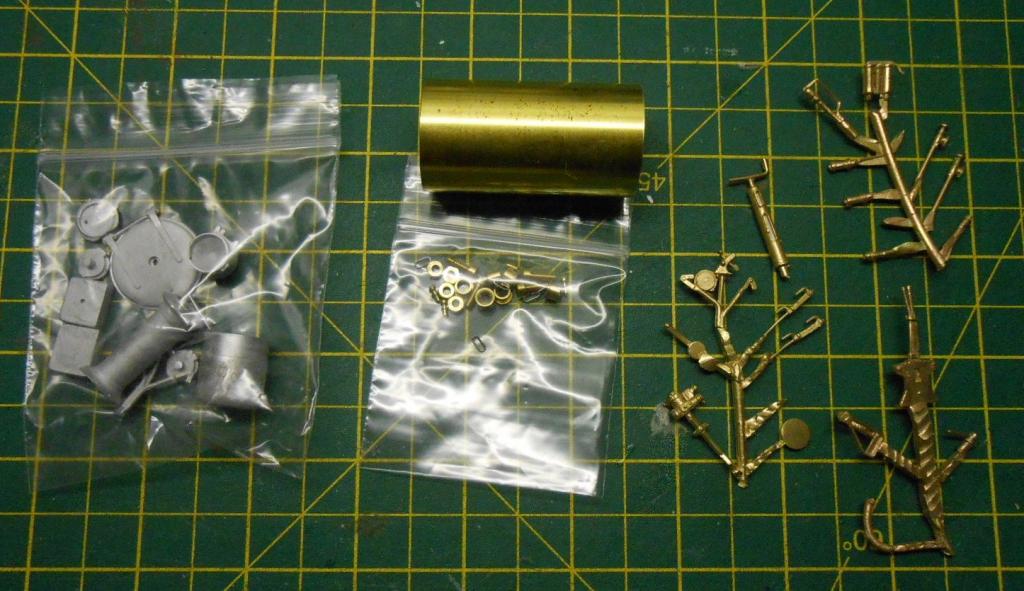

Narrow gauge beauty's
in Irish Models
Posted
Ye Gods, a Swilly 4-8-0. Scale, gauge, origins?
A real beauty, whatever its origins. Like JB, am hoping there is dark green under the weathering. For me, the Swilly's locos represent the best of Irish narrow gauge. Would love to recreate Casserly's photos of Burtonport - if only I had the space...